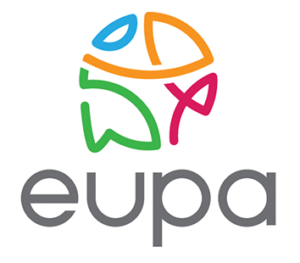In this digital age, the discourse surrounding humanitarian issues is deeply influenced by the abundance of online information, which can often be misleading or plainly false. Although mis- and disinformation have long existed offline, the increased digitalisation of the information space contributes to sharing false or misleading content faster and wider than ever before. Mis- and disinformation significantly impact public perceptions, policy decisions, and societal attitudes.
By exploring instances of shared false or misleading information, we can gain insight into how narratives are constructed and perpetuated. This will highlight the need for critical evaluation and informed discourse to understand the complexities of humanitarian issues.
Understanding the terms
Misinformation refers to false or inaccurate information that is spread without the intent to deceive. It can be spread by individuals who genuinely believe it to be accurate or by those who are careless in verifying the information.
Disinformation is false information that is deliberately spread with the intent to deceive or manipulate others. It’s often used as a tool to influence opinions, sow discord, or achieve specific goals. Disinformation is characterised by its deliberate nature.
Mis- and Disinformation in the humanitarian sector
Several types of mis- and disinformation in the humanitarian sector are particularly prevalent and dangerous.
Vulnerable communities can be directly targeted by disinformation. There have, for example, been instances of human traffickers impersonating official sources, claiming that certain unsafe migration pathways are actually safe. Vulnerable migrants who come into contact with and believe this information are led to these pathways where they experience dangerous situations that make them dependent on human traffickers.
Another dangerous source of mis- and disinformation can be policy and governance information. An example of this is when it was widely claimed that NGOs that conduct search and rescue missions at sea to save migrants from drowning act as a pull factor for migration, meaning that more people choose to undertake this dangerous journey because these NGOs exist. Later however studies found that this claim is false.
Misinformation often also arises from the misinterpretation of data or because the media selectively shares stories that play into a specific narrative and which are often only partially true.
Consequences on humanitarian work
Mis- and disinformation can constrain humanitarian access and operations. False and manipulated information can weaken trust, undermine communities’ acceptance of humanitarian organisations, and cause reputational damage. This can reduce operational capacities and restrict the space for humanitarian action, potentially leaving affected people’s needs unattended (ReliefWeb).
In 2018 for example, Save the Children was the target of a disinformation campaign accusing it of colluding with human traffickers. This resulted in media attention on their search-and-rescue activities in the Mediterranean, with the far-right group Defend Europe even hiring its own boat to try to stop them. (RSIS)
The principles of humanity, neutrality, impartiality, and independence that form the basis of humanitarian work are built on trust. If the reputation of a humanitarian organisation is tarnished due to disinformation and misinformation, this trust is eroded. And if public opinion is affected, funding and other support for the work of that humanitarian organisation will be adversely affected too, ultimately impacting those in need of assistance. (RSIS)
The role of social media
Misinformation is often spread unknowingly on social media by people with a large online following who blindly trust them. It is very common, especially in younger generations, that we receive news from people who do not properly check information before sharing it. This problem is amplified by sensationalism. The abundance of available information has led us to pay attention to those headlines that are catchy and evoke an emotional response rather than those that report on an issue impartially. Therefore, the information that arrives at the reader is often sensationalistic and not checked.
The need for a critical eye
We must recognize our role in addressing the issue of mis- and disinformation within the humanitarian sector. Readers should actively engage with the content presented, critically evaluating the information provided and fact-checking through reputable sources. Developing a discerning eye for false or misleading information involves questioning narratives, verifying claims, and seeking diverse perspectives to comprehensively understand complex issues. By honing our ability to identify credible sources and scrutinize information, we contribute to a culture of responsible information consumption and support the integrity of humanitarian efforts.
Final thoughts
In conclusion, the pervasive impact of mis- and disinformation on the humanitarian sector underscores the urgent need for heightened awareness, critical evaluation, and informed discourse. By understanding the dynamics of misinformation, recognising its consequences, and prioritising media literacy, we can work together to fortify the resilience of humanitarian efforts, protect vulnerable communities, and uphold the principles of humanity and integrity in addressing global challenges. We can only navigate the complexities of humanitarian issues in an increasingly digital age through concerted action and a commitment to truth and accuracy.
If you are interested in the work of MOAS and our partners, please follow us on social media, sign up for our newsletter and share our content. You can also reach out to us at any time via [email protected]. If you want to support our operations, please give what you can at www.moas.eu/donate.


